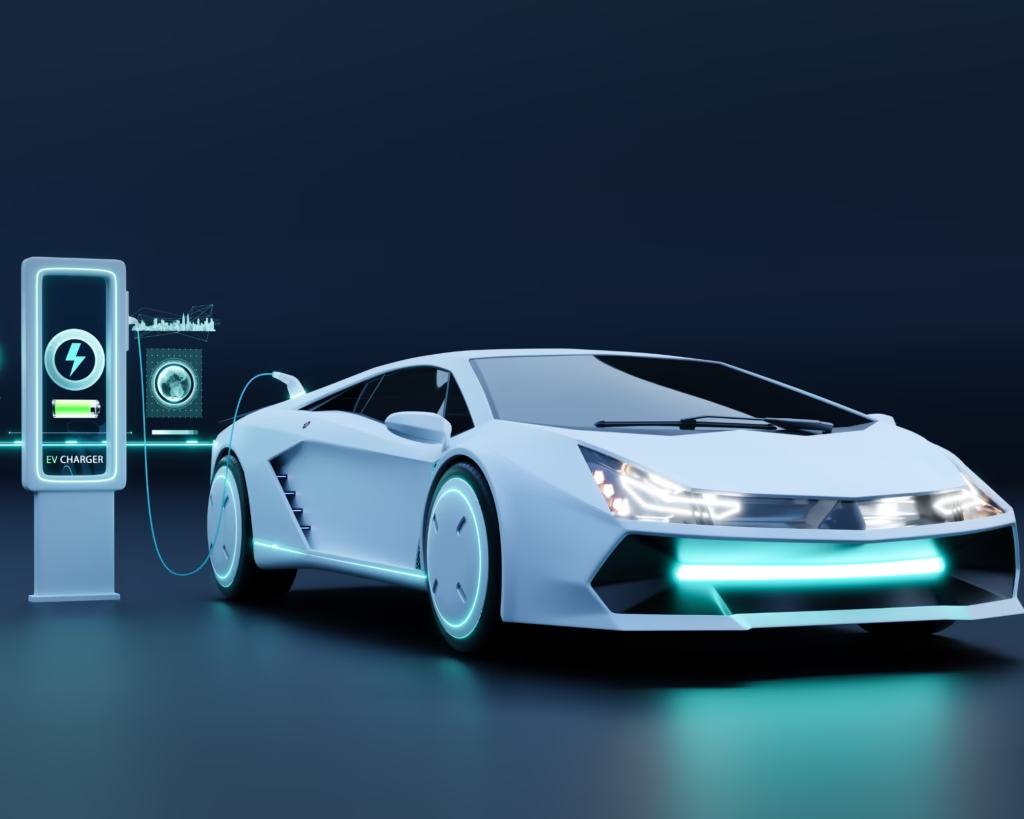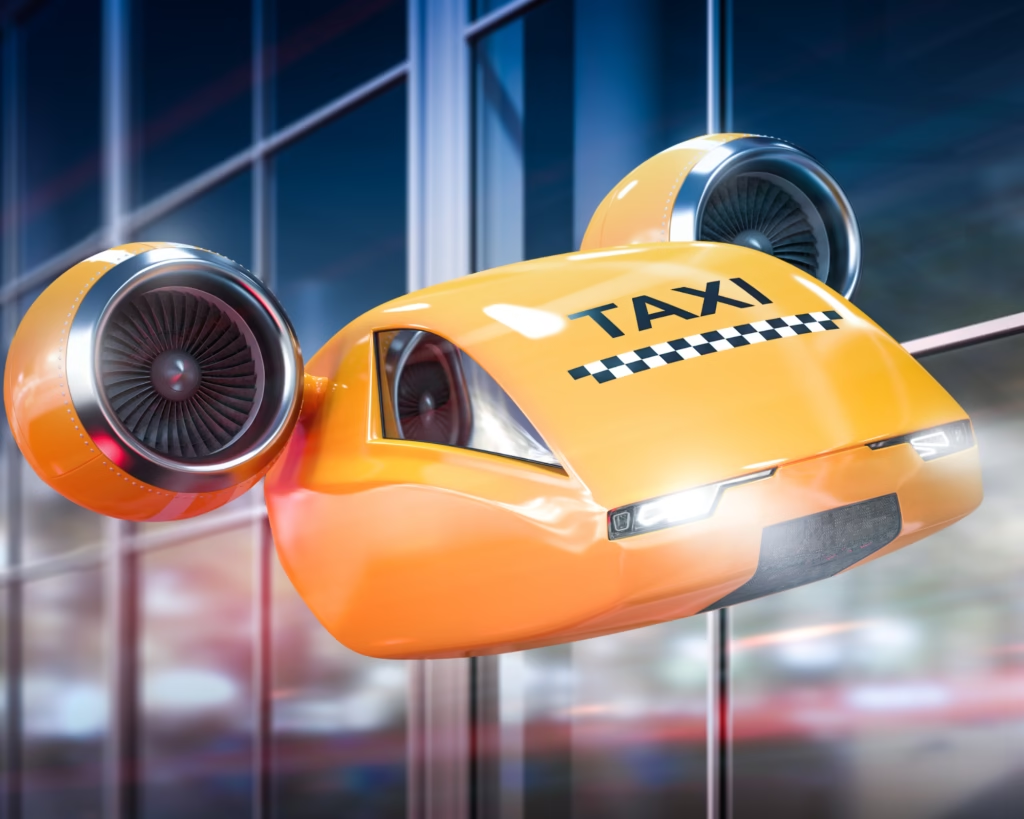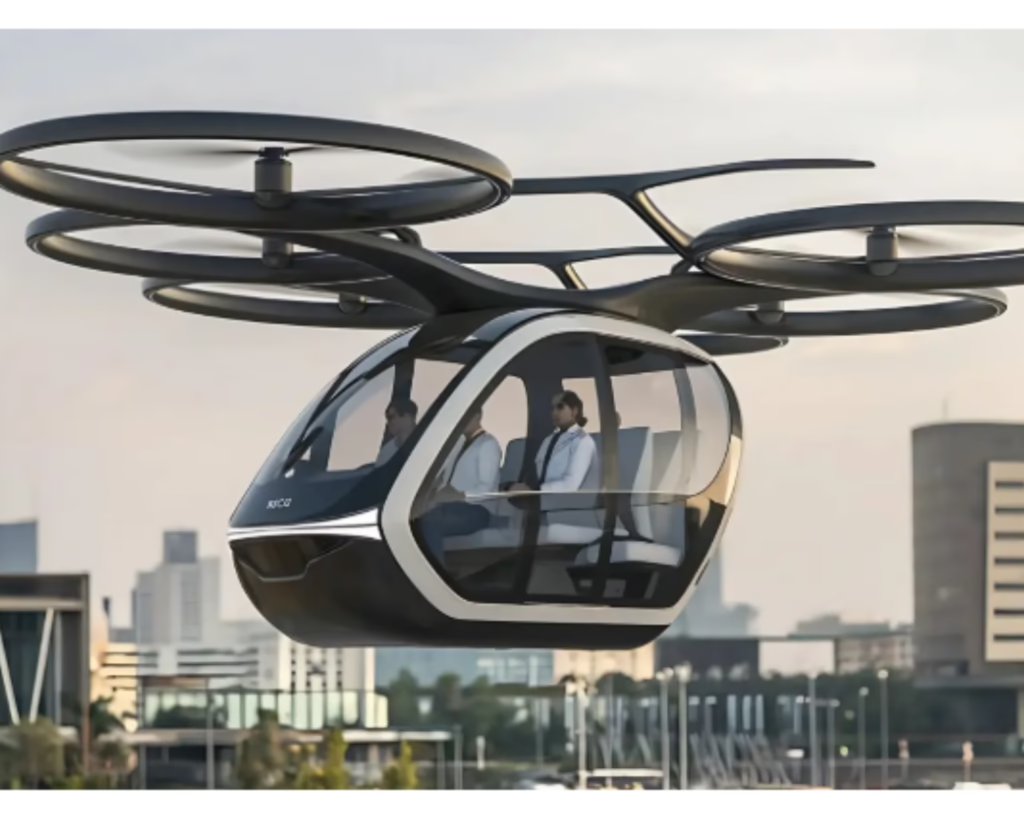Emergence of Electric Vehicles
The emergence of electric vehicles (EVs) and flying taxis marks a pivotal shift in the landscape of transportation. These innovations represent core components of sustainable transportation initiatives aimed at reducing carbon emissions and enhancing urban air quality. As the world grapples with climate change, the adoption of EVs has gained significant momentum, along with advancements in flying taxi technology. Today, major automotive manufacturers and innovative startups like Tesla are competing to introduce next-generation transportation solutions that appeal to environmentally conscious consumers.
Electric cars use battery-powered motors, offering lower emissions and higher energy efficiency than gasoline vehicles. Improved charging infrastructure and declining battery costs have made EVs more accessible. In 2024, the shift to electric mobility is expected to grow, driven by supportive government policies and incentives.

The environmental benefits of electric vehicles are substantial. As zero-emission vehicles, they contribute to reduced greenhouse gas emissions, especially when charged from renewable energy sources. This aligns with global sustainability goals and is central to the future of transportation, where there is a focus on creating green transportation solutions that mitigate the adverse effects linked to fossil fuels. Furthermore, innovations in transportation such as smart transportation systems are complemented by the development of electric vehicles, ultimately facilitating a more efficient and eco-friendly commuting experience for urban populations.
As consumer adoption rates rise, fueled by a growing awareness of the benefits of electric mobility, the automotive industry continues to evolve. The competition among traditional car manufacturers and emerging players in the EV market underscores a strong commitment to shaping the future of transportation through electric-powered options, setting the stage for a new era of sustainable and innovative transport solutions.
The Concept of Flying Taxis
The realm of urban transportation is on the brink of a revolutionary transformation with the advent of flying taxis. These aerial vehicles are being designed to navigate city skies, thereby offering a solution to the growing issue of traffic congestion. Innovations in transportation technology have led to the development of vertical take-off and landing (VTOL) systems, enabling these vehicles to operate in urban settings where space is limited. VTOL technology allows flying taxis to ascend and descend vertically, much like helicopters, while maintaining efficiency akin to airplanes, thus streamlining the process of urban air mobility.

Furthermore, advancements in drone technology have played a pivotal role in making flying taxis a tangible possibility. Companies are leveraging drone engineering principles to create small, lightweight aerial vehicles capable of carrying passengers safely and efficiently. Electric propulsion systems are an integral component of this technology; they promise to reduce emissions and contribute to sustainable transportation efforts. As the push for green transportation solutions escalates, electric vehicle technology becomes crucial to the acceptance and viability of flying taxis as an alternative to traditional ground transportation.
Several companies are already testing prototypes of flying car technology, providing glimpses into what the future might hold. Notable projects are underway, aimed at establishing the first operational networks of flying taxis in metropolitan areas. However, the deployment of these vehicles poses significant regulatory challenges. Governments will need to create frameworks that ensure safety, deal with air traffic control in densely populated areas, and address public concerns regarding privacy and noise pollution.
Ultimately, the integration of flying taxis into urban landscapes has profound implications for city design and transportation trends in 2024. By alleviating congestion on the ground and promoting the use of autonomous vehicles, flying taxis could reshape our approach to urban mobility, contributing significantly to the future of transportation.
Challenges and Solutions in Transportation Innovation
The future of transportation is marked by rapid advancements in electric vehicles (EVs) and aerial transportation, including flying taxis. However, both sectors face significant challenges that must be addressed to fully realize their potential. One major hurdle is the required infrastructure. Electric vehicle technology demands a robust network of charging stations to encourage widespread adoption. Currently, many regions lack adequate facilities, limiting the practical use of electric cars. Similarly, the development of urban air mobility requires designated airspace and landing zones, creating a need for comprehensive urban planning and regulatory frameworks.

Battery technology is a key challenge for flying cars. Despite advancements in electric car efficiency and range, current batteries still have limitations in charging times and energy density. For flying cars to become viable, batteries must support safe, sustained flight. Ongoing research and increased investment in next-generation battery technologies are crucial to overcoming these challenges.
Safety regulations are crucial for electric and aerial vehicles. As autonomous vehicles emerge, regulations must evolve to ensure public trust and safety. Collaboration between governments, industries, and communities is key to developing effective policies. Public acceptance of green transportation relies on education and demonstrating the reliability of these innovations.
To overcome these challenges, facilitating dialogue among stakeholders and investing in related technologies are critical. Collaborative ventures can lead to comprehensive smart transportation systems that support both electric cars and flying taxis. The goal is to create a cohesive transportation ecosystem that advances the trends of 2024 and beyond, ensuring a seamless transition toward sustainable and innovative transportation solutions.
The Future Landscape: Integrating Multiple Modes of Transport
The future of transportation is anticipated to be a multifaceted ecosystem, where various modes such as electric cars, flying taxis, public transit, and cycling coexist seamlessly. Urban planners and policymakers will play a pivotal role in creating environments that enable these modes to function in harmony, ensuring that users can transition smoothly between them. This integration will not only enhance user experience but also promote sustainable transportation solutions that minimize environmental impact.
At the heart of this vision lies the development of smart transportation systems that utilize advanced technologies for real-time data sharing and communication among different transport modes. For instance, electric vehicle technology can be harmonized with public transit schedules to optimize routes and reduce waiting times. Similarly, flying car technology may integrate with existing transport networks to create efficient aerial transportation options that alleviate ground congestion, particularly in densely populated urban areas.
As urban air mobility becomes a reality, upcoming transportation trends for 2024 will likely focus on how these innovations in transportation can support accessibility. The design of urban spaces will need to prioritize easy access to various modes of transport. Furthermore, this shift will encourage a smoother transition towards greener alternatives, ultimately supporting sustainability and reducing environmental impact. Moreover, electric cars will continue to play a significant role in this landscape, providing eco-friendly choices for commuters while potentially serving as hubs for charging and connectivity with other transport modes.
Ultimately, fostering a collaborative approach among various stakeholders, including governmental bodies, private enterprises, and the community, will be essential to reshaping the future of transportation. Moreover, through coordinated efforts, the ambitious goal of a comprehensive and sustainable transportation network can be realized. In this vision, electric cars, flying taxis, and other innovations can seamlessly coexist to serve the diverse needs of urban dwellers. Consequently, this will pave the way for smarter, more resilient cities that are better equipped to handle the challenges of the future.







